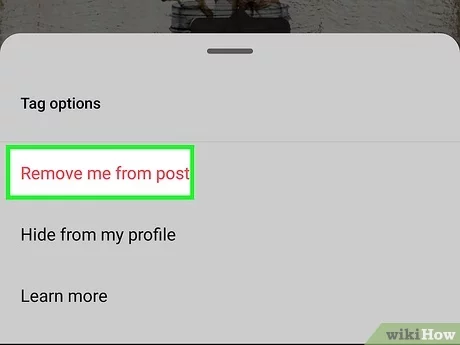Navigating the Etiquette of Tagging: Understanding and Addressing Unwanted Tagging in Instagram

In the vibrant digital realm of Instagram, where photos, videos, and stories serve as windows into our lives and experiences, tagging has emerged as a powerful tool for connection, collaboration, and community building. However, amid the flurry of tags and mentions lies a nuanced issue: unwanted tagging. In this comprehensive exploration, we will delve into the complexities of unwanted tagging in Instagram, unravel its underlying causes, examine its impact on users and communities, and provide actionable strategies for navigating this digital etiquette dilemma effectively.
Understanding Unwanted Tagging:
Unwanted tagging refers to the practice of tagging individuals or accounts in posts, comments, or stories without their consent or approval. While tagging can be a means of recognition, engagement, or collaboration, unwanted tagging can be intrusive, disruptive, and potentially harmful. Some common scenarios of unwanted tagging include:
- Spam Tagging: Individuals or accounts may engage in spam tagging, where they indiscriminately tag large numbers of users in posts or comments to gain visibility, attract followers, or promote their content.
- Misidentification: Users may be mistakenly tagged in posts or comments due to similarities in usernames, profile pictures, or content themes, leading to confusion or embarrassment.
- Unsolicited Promotion: Brands, businesses, or influencers may tag individuals in promotional content or advertisements without their consent, leading to feelings of intrusion or annoyance.
- Negative Associations: Users may be tagged in posts or comments containing sensitive or controversial content, such as political opinions, sensitive topics, or personal information, without their consent, leading to discomfort or backlash.
Impact of Unwanted Tagging:
The impact of unwanted tagging in Instagram extends beyond mere inconvenience to encompass broader implications for users and communities:
- Privacy Concerns: Unwanted tagging can compromise users’ privacy and security by exposing them to unwanted attention, harassment, or targeted advertising. Users may feel exposed or vulnerable when their usernames or profiles are associated with content without their consent.
- User Experience: Unwanted tagging disrupts the user experience on Instagram, detracting from the enjoyment and engagement with content. Users may feel overwhelmed or frustrated by notifications and mentions stemming from unwanted tags, leading to a negative perception of the platform.
- Brand Reputation: Brands and businesses risk damaging their reputation and credibility by engaging in unwanted tagging practices. Users may perceive brands that engage in spam tagging or unsolicited promotion as spammy, untrustworthy, or inconsiderate, leading to loss of followers and brand loyalty.
- Community Norms: Unwanted tagging undermines the unwritten rules and etiquette of Instagram’s community, which values authenticity, respect, and mutual consent. Users expect to have control over their online presence and interactions, and unwanted tagging violates this expectation, eroding trust and social norms.
Strategies for Addressing Unwanted Tagging:
Addressing unwanted tagging in Instagram requires a combination of proactive measures and reactive responses to mitigate its impact and discourage future occurrences:
- Adjust Privacy Settings: Review and adjust your privacy settings on Instagram to control who can tag you in posts, comments, or stories. Limit tagging permissions to friends, followers, or specific individuals to prevent unwanted tagging from strangers or spam accounts.
- Use Tag Review: Enable tag review in your Instagram settings to review and approve tags before they appear on your profile. This allows you to maintain control over the content associated with your profile and prevent unwanted tagging from appearing publicly.
- Report or Remove Tags: If you are tagged in posts, comments, or stories without your consent, take action to report or remove the tags. Instagram provides options to report inappropriate or abusive content, including unwanted tagging, and allows users to remove themselves from tags in posts and comments.
- Communicate Boundaries: Communicate your boundaries and preferences regarding tagging to friends, followers, and collaborators on Instagram. Politely request that they seek your consent before tagging you in posts or comments, and explain the impact of unwanted tagging on your privacy and user experience.
- Educate and Advocate: Educate your followers and community about the importance of respectful tagging practices and mutual consent on Instagram. Share tips and guidelines for tagging etiquette, such as seeking permission before tagging others and respecting their privacy preferences.
- Engage in Positive Tagging: Lead by example and engage in positive tagging practices by tagging others with their consent and in relevant contexts. Use tagging as a means of recognition, collaboration, and community building, and foster a culture of respect and consent on Instagram.
Conclusion:
In conclusion, unwanted tagging in Instagram represents a complex and nuanced issue with implications for user privacy, experience, and community norms. By understanding the underlying causes of unwanted tagging, recognizing its impact on users and communities, and implementing proactive strategies for addressing and preventing unwanted tagging, individuals and businesses can promote a culture of respect, consent, and positive engagement on Instagram. With a commitment to transparency, communication, and mutual respect, we can navigate the intricacies of tagging etiquette and cultivate a safer, more inclusive digital environment for all users.




